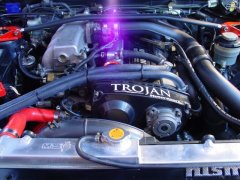Dyno Graph Question - What do you make of this?
Announcements
-
Similar Content
-
Latest Posts
-
By Red Sky II · Posted
Thanks Paul I reached out to Autotainment but they no longer work on JDM cars as the guy who used to do the work moved on and is no longer doing that kind of work. I am talking with Level Up Audio though. -
Interesting, I've heard complete opposite on my end. Bit of a lottery I guess.
-
Getting Dangerously close to being ready to go back in the car. Rockers in with clearance castings now (and a quick check with the USA for the torque settings for the larger custom bolts) Covers and ported FAST Manifold sitting on there. Not fully tightened down as there's some clearancing required for the water pump with the earlier LS1 water pump styles. Example of the clearancing needing to be done: The body has to be ground a little but I'm struggling finding an actual piece of it. The later variant of water pump resolves the issue as the manifold was designed around it. It only came on the VZ LS1 in Australia, it got a different pulley for Gen4 motors. (it also costs $450... vs... $0).
-
Doing some height adjustment on front suspension on a v35 and noticed this. The passenger side looks correct. So wondering what's happened to the drivers side?
-






Recommended Posts
Create an account or sign in to comment
You need to be a member in order to leave a comment
Create an account
Sign up for a new account in our community. It's easy!
Register a new accountSign in
Already have an account? Sign in here.
Sign In Now